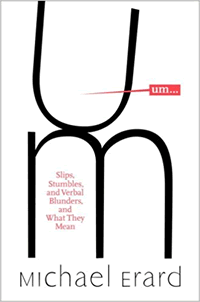
The title of this post comes from a book by Michael Erard that I’m currently reading: Um. . .: Slips, Stumbles, and Verbal Blunders, and What They Mean.
It’s an interesting book that discusses how we all tend to um and er (or uh) in speech, and get words mixed up, correct ourselves, and make various other verbal blunders. In ordinary everyday speech we tend to ignore such stumbles, unless they get in the way of communication. When we listen to people on the radio and TV, and giving formal speeches and lectures, we might notice such slips more, especially in the speeches of politicians.
The aesthetic of umlessness refers to the idea that formal speeches should be as um-free as possible. It is something that emerged in the early 20th century, especially with the invention of microphones, recording equipment, radio and TV. Before then, advice for public speaking and oratory, which goes back to ancient Greece, rarely mentions the need for umlessness.
Ums and ers have various functions in speech, which Erard discusses, and one scholar he interviewed said that ums and other verbal fillers are an essential part of speech – they add information about intentions and thoughts separate from the main meaning of what you’re saying.
Do you um and er/uh frequently? Does it depend on the context?
What verbal fillers are used in other languages?